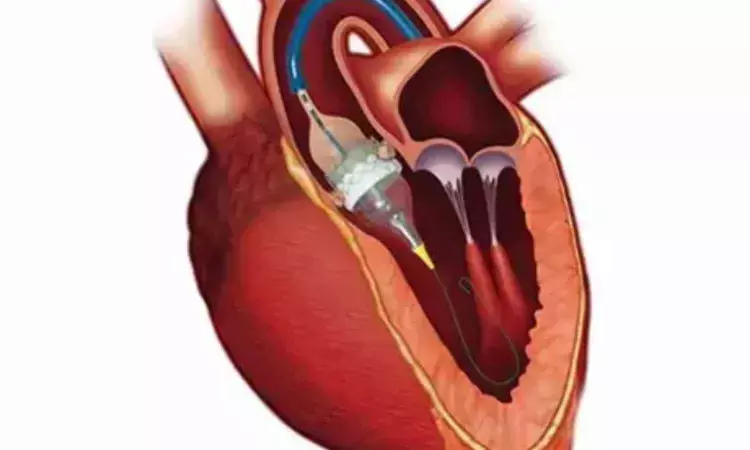- Home
- Medical news & Guidelines
- Anesthesiology
- Cardiology and CTVS
- Critical Care
- Dentistry
- Dermatology
- Diabetes and Endocrinology
- ENT
- Gastroenterology
- Medicine
- Nephrology
- Neurology
- Obstretics-Gynaecology
- Oncology
- Ophthalmology
- Orthopaedics
- Pediatrics-Neonatology
- Psychiatry
- Pulmonology
- Radiology
- Surgery
- Urology
- Laboratory Medicine
- Diet
- Nursing
- Paramedical
- Physiotherapy
- Health news
- Fact Check
- Bone Health Fact Check
- Brain Health Fact Check
- Cancer Related Fact Check
- Child Care Fact Check
- Dental and oral health fact check
- Diabetes and metabolic health fact check
- Diet and Nutrition Fact Check
- Eye and ENT Care Fact Check
- Fitness fact check
- Gut health fact check
- Heart health fact check
- Kidney health fact check
- Medical education fact check
- Men's health fact check
- Respiratory fact check
- Skin and hair care fact check
- Vaccine and Immunization fact check
- Women's health fact check
- AYUSH
- State News
- Andaman and Nicobar Islands
- Andhra Pradesh
- Arunachal Pradesh
- Assam
- Bihar
- Chandigarh
- Chattisgarh
- Dadra and Nagar Haveli
- Daman and Diu
- Delhi
- Goa
- Gujarat
- Haryana
- Himachal Pradesh
- Jammu & Kashmir
- Jharkhand
- Karnataka
- Kerala
- Ladakh
- Lakshadweep
- Madhya Pradesh
- Maharashtra
- Manipur
- Meghalaya
- Mizoram
- Nagaland
- Odisha
- Puducherry
- Punjab
- Rajasthan
- Sikkim
- Tamil Nadu
- Telangana
- Tripura
- Uttar Pradesh
- Uttrakhand
- West Bengal
- Medical Education
- Industry
EuroPCR 2024-Short-term data from NOTION-2: TAVR versus SAVI for younger patients with aortic stenosis

The Course Directors have selected 3 major Late Breaking Trials (LBTs) that were presented for the first time during the 2024 edition of EuroPCR. These trials were selected on account of their design, outcomes and potential to influence daily clinical practice. Among them is the NOTION-2 randomised clinical trial (RCT).
Background
Evidence comparing the use of transcatheter aortic valve implantation (TAVI) and surgical aortic valve replacement (SAVR) in low-risk patients with aortic stenosis (AS) has led to the European Society of Cardiology (ESC) Clinical Practice Guideline recommendation1 that TAVI is indicated as the primary treatment option in patients older than 75 years, who are anatomically suitable for the procedure (Class I recommendation, level of evidence A).
In the NOTION-2 study, investigators from Denmark randomised patients ≤75 years of age to TAVI or SAVR – unlike previous RCTs, those with bicuspid valve anatomy were not excluded. The primary endpoint at 1 year included all-cause mortality, stroke and rehospitalisation (related to procedure/valve or heart failure).
Results
TAVI and SAVR showed similar rates of the primary endpoint at 1 year (TAVI 10.2%, SAVR 7.1%; p=0.3), but this interpretation is limited by the small sample size, and the hypothesis of TAVI being noninferior to SAVR was formally not met. The mean age was 71.1 years. Among the secondary endpoints, TAVI resulted in a lower incidence of new onset atrial fibrillation and major bleeding, but a higher incidence of non-disabling stroke, paravalvular leak (PVL) and pacemaker implantation. A post hoc analysis demonstrated comparable results between TAVI and SAVR for tricuspid aortic valves (73% of all cases). However, in a non-prespecified analysis of the limited number of patients with bicuspid valves, outcomes were less favourable after TAVI (including the primary endpoint and the incidence of stroke).
Key learnings
Expanding TAVI indications to young patients with AS and longer life expectancy imposes specific challenges.
Firstly, a larger proportion of these young AS patients have bicuspid valve anatomy (27% in NOTION-2), and this group has been largely excluded from prior “low-risk” trials. Therefore, NOTION-2 provides new insights concerning the respective value of SAVR and TAVI in this anatomical setting. Given the strong indication of less favourable results with TAVI in this cohort, dedicated and larger randomised studies comparing TAVI and SAVR for this specific indication are now needed.
Secondly, achieving optimal results of TAVI (with low rates of pacemaker implantation, stroke and PVL) is particularly important in younger patients, given that these expectations are already provided by SAVR (as confirmed in NOTION-2).
Finally, the longer life expectancy of this cohort is likely to portend higher rates of a second TAVI procedure (namely TAV-in-TAV). Long-term follow-up and outcome analysis of NOTION-2 and other similar randomised trials (as well as larger scale registries) are therefore mandatory.
Choice of TAVI device
Self-expanding devices were used in 72.7% of patients in NOTION-2, and long-term follow-up will be very informative, since TAV-in-TAV procedures can be more challenging with these platforms. The results of the present study should not be extrapolated to the use of balloon-expandable devices; dedicated studies using these devices in patients with bicuspid AS are also required.
Conclusions and PCR recommendations
NOTION-2 provides further short-term data concerning the 1-year outcome of younger AS patients with tricuspid valve anatomy treated with TAVI compared to SAVR. Secondary clinical endpoints show mixed outcomes after TAVI and SAVR, which is consistent with previous randomised trials.
NOTION-2 also provides a “word of caution” concerning the use of TAVI in younger AS patients with bicuspid valve anatomy. Dedicated randomised trials comparing optimal TAVI with SAVR in younger patients with bicuspid aortic valve stenosis are now required.
Dr Kamal Kant Kohli-MBBS, DTCD- a chest specialist with more than 30 years of practice and a flair for writing clinical articles, Dr Kamal Kant Kohli joined Medical Dialogues as a Chief Editor of Medical News. Besides writing articles, as an editor, he proofreads and verifies all the medical content published on Medical Dialogues including those coming from journals, studies,medical conferences,guidelines etc. Email: drkohli@medicaldialogues.in. Contact no. 011-43720751


